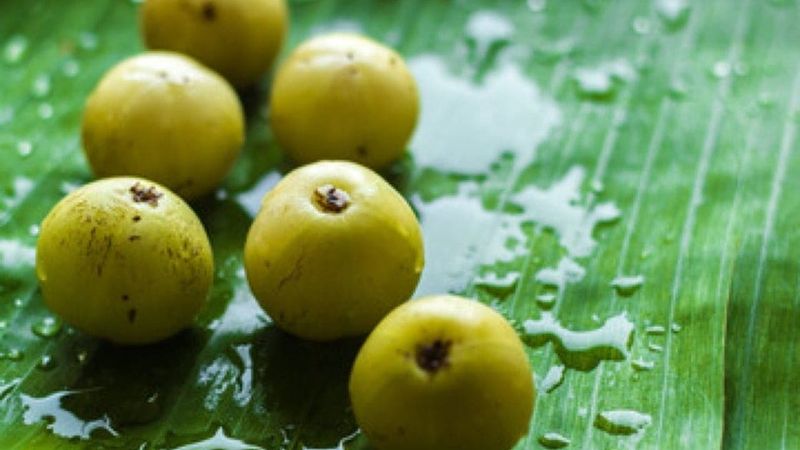

Our Review Process
Our articles undergo extensive medical review by board-certified practitioners to confirm that all factual inferences with respect to medical conditions, symptoms, treatments, and protocols are legitimate, canonical, and adhere to current guidelines and the latest discoveries. Read more.
Our Editorial Team
Shifa Fatima, MSc.
Author
Dr. Apoorva T, MHM.
MEDICAL ADVISOR
Is Amla Good For Diabetes?
Amla or Indian Gooseberry (Phyllanthus emblica) is a hard, spherical, greenish-yellow coloured fruit of a medium-sized tree belonging to the Phyllanthaceae family, which is native to India. Amla is a major culinary ingredient in various Indian dishes and has extensive utility in Ayurveda.
But is Amla good for diabetes? Yes Amla is known for its immunity-boosting properties and is known to be a great remedy for diabetes. The article contributes to the understanding if Amla is good for diabetes or not.
Diabetes is a disease that causes increased blood sugar levels due to the less production of low insulin by the β cells of the Islet of Langerhans in the Pancreas. Insulin is a hormone that is responsible for the breaking down of sugar molecules and uptake of the sugar by the cells from the bloodstream.
Table of Contents
Nutrition value of Amla
Irregular insulin secretion leads to high blood glucose levels, which are known as Diabetes Mellitus or Type 2 Diabetes. People with diabetes have to limit calorie intake, and foods containing high fructose content or starch are detrimental to their health. However, many foods such as Amla have proved to help in controlling diabetes. Not just for people with type 1 diabetes, Amla is also good for diabetes type 2. Also know about best medicine for diabetes in India.
| Nutritional Value | per 100g |
|---|---|
| Total Carbs Water Dietary Fiber Total Fat Vitamin C Vitamin E Vitamin A Manganese Zinc Copper Potassium Calcium Protein Omega – 3 Fatty Acids Vitamin B6 | 15 g 86 g 86 g 0.5 g 440 – 800 mg 0.16 mg 290 IU 0.144 mg 0.12 mg 0.1 mg 198 mg 25 mg 1 mg 48 mg 0.1 mg |
Benefits of Amla
- Amla is one of the common plants that is used in ancient Ayurveda and has potent healing qualities for several diseases like diabetes, kidney problems, anti-ageing, etc.
- Amla juice or extracts of Amla are great for curing heartburn due to indigestion. Dried Amla is perfect for a snack after heavy meals, as it helps in proper digestion and reduces gastric problems caused by indigestion. Also know about best fruit for diabetes.
- Amla has proven benefits for anti-ageing. Amla increases the rejuvenation and healing of cells. Amla prevents the breaking down of collagen, which is a protein matrix for skin, thus maintaining the overall vitality of the skin. Amla also strengthens the hair roots and keeps the eyes healthy and powerful.
- Amla is rich in antioxidants. Antioxidants play a vital role in healing cancerous cells. Amla extracts have been found to help in healing cancerous cells.
- The antioxidants and Vitamin C helps in reducing high blood pressure, thereby decreasing the risks of heart diseases. It also helps to normalize fat and blood glucose levels by lowering triglyceride, total cholesterol & LDL (bad) cholesterol, and by increasing the levels of HDL (good) cholesterol in the body. Amla juice is good for people with diabetes.
- Amla reduces the coagulation of blood and the formation of blood clots in the arteries. This decreases the chances of a heart attack by artery blockage. Amla juice is good for people with diabetes. Amla juice contains a lot of antioxidants that make it a perfect beverage for people with diabetes. Also know about Indian diabetes diet.
Benefits of Amla for People with Diabetes
- Amla helps in the healing of pancreatitis and aids in the proper secretion of insulin. Amla candies can also be used to extract the benefits of Amla; however, fresh amlas are always best for health.
- Lowers the level of Sorbitol, which is a toxic sugar that further increases diabetic complications such as retinopathy and neuropathy.
- Promotes better blood to sugar ratio.
- Enhances glucose tolerance.
- Improves levels of HbA1c in Type II Diabetes.
- Regulates glucose metabolism.
- Improves insulin response of the body.
- Amla acts as a major cofactor for enzyme activity.
- Decrease blood triglyceride levels.
- Boost synthesis in HDL & LDL. Also know about is honey good for diabetes?.

How Amla Helps in Controlling Blood Sugar?
- Amla helps in the healing of the pancreas, increases the secretion of insulin, and enhances insulin sensitivity and uptake of insulin by the cells.
- Amla, for people with type II diabetes, helps in glucose metabolism and reduces the blood glucose levels of the body by its antioxidant properties.
- Amla also prevents toxin accumulation in the body, thereby aiding in the proper functioning of the body for people with type II diabetes.
- Apart from all these, Amla also helps in weight loss and normalizing fat to blood ratio. Also know about Indian diabetes diet.
Different Ways to Consume Amla for People with Diabetes
- Amla can be eaten raw or in juice form or prepared in dishes. Raw Amla is best suited, but many people may find the sourness of raw Amla too powerful.
- Cut a fresh raw amla and de-seed it, and sprinkle some rock salt over it, and it is a perfect snack. However, people with high blood pressure should be mindful of their salt intake.
- Amla powder and pure amla juice are also available in the stores, which can be consumed daily with water.
- Drinking amla juice or raw amlas daily can stabilize blood glucose levels greatly. Amla candy is also good for people with diabetes as it helps in stabilising the sugar levels even as it makes for a tasty snack.
- Amla murabba contains a lot of antioxidants and Vitamin C and is great for maintaining blood glucose levels. Apart from these, there are a few side effects, as the amla murabba increases the acidity of the stomach. There is not much research done on Amla murabba, so it is best to consult your dietician before investing in it. Also know about diabetes treatment in ayurvedic.
Bottomline
Since ancient times, Ayurveda has given Amla extensive importance for its various properties. Incorporating fresh Amla into their diet is beneficial for all people, and especially for people with diabetes. This article describes the benefits of Amla and the way it can aid in maintaining proper health and improving bodily functions. Amla is anti-diabetic, and has properties to reduce high blood glucose levels and prevents toxin accumulation in the body. Amla works equally good for people with Type 1 and Type 2 Diabetes. It is good for people with diabetes and has a ton of beneficial properties in maintaining and stabilizing high blood sugar levels. Also know about freedom from diabetes.
FAQs
1. How much Amla should a person with diabetes take?
Amla is a great option for people who are suffering from diabetes. Amla is one of the natural remedies to keep blood sugar levels in control. Amla is good for people with diabetes. A person with diabetes can have one or two amlas in a day, depending on the severity of diabetes. The fruit can be eaten raw or in juice form. Amla is an excellent way to keep the blood sugar levels in control without crunching down on too many meds.
2. Is Amla high in sugar?
No, Amla has 0 mg of sugar and extremely high levels of Vitamin C, around 500 mg to 800 mg per Amla. Eating Amla is extremely beneficial for all people, and especially for people with diabetic conditions.
3. Who should not eat Amla?
People who suffer from blood conditions where the blood takes a lot of time to clot should not have Amla. As Amla has antiplatelet properties, i.e., it acts as a blood thinner. Patients who have undergone surgery or have a risk of bleeding from a wound should not eat Amla as it increases the bleeding tendencies.
References
- https://food.ndtv.com/health/amla-for-diabetes-how-to-use-the-tangy-goodness-to-manage-blood-sugar-levels-1914843
Disclaimer
This website's content is provided only for educational reasons and is not meant to be a replacement for professional medical advice. Due to individual differences, the reader should contact their physician to decide whether the material is applicable to their case.








